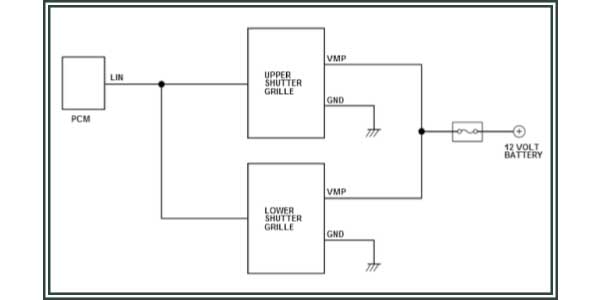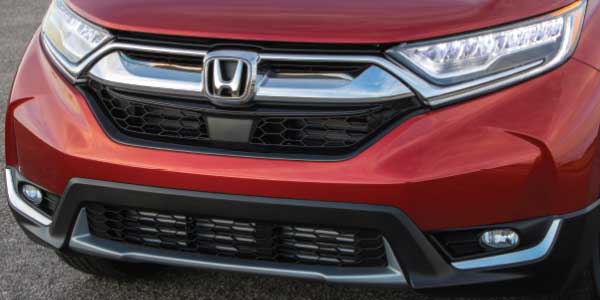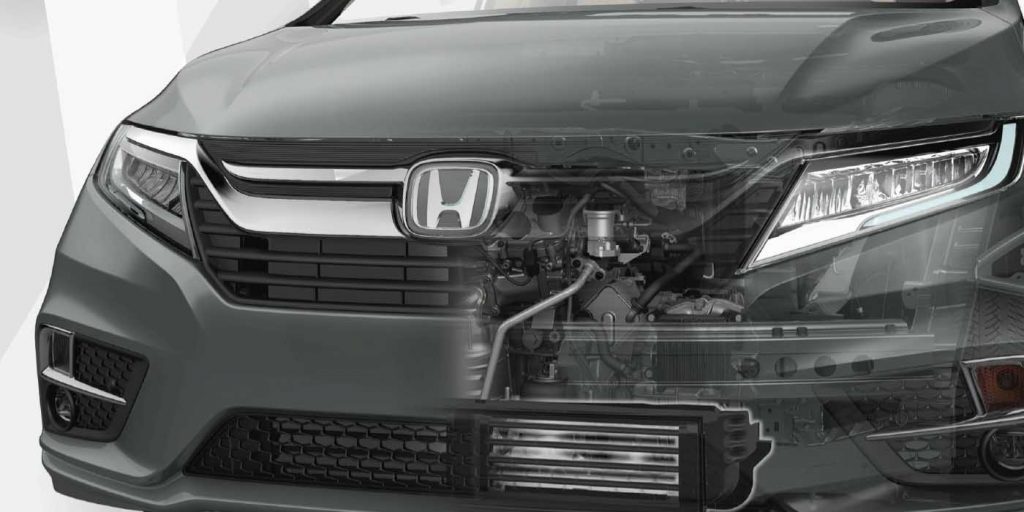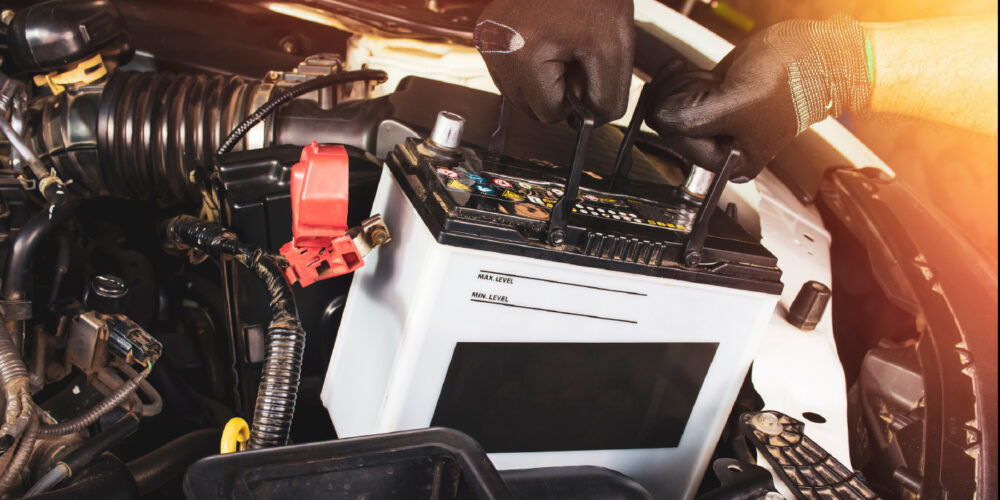Since 2017, Honda vehicles like the Odyssey and CR-V have featured active grille shutters – a system that optimizes aerodynamics by using vents to control airflow through the grille to the cooling system and engine compartment.
If air is required to cool the engine, the vents are opened. If no airflow is needed, the vents are shut, contributing to significantly reduced aerodynamic drag.
Mounted ahead of the radiator, the active grille shutters feature motorized vanes the move to block airflow. Controlled by the car’s engine control module, the vanes can be in many positions – from fully closed to fully open – depending on the amount of cooling air required for the condenser and radiator.
When fully closed, the reduction in drag means the active grille shutters can reduce CO2 emissions by 2%. As an additional benefit, the system keeps the vanes closed as long as possible when starting from cold, so the engine reaches its most efficient operating temperature quicker. This also helps reduce fuel consumption.

When the vehicle is started, the vanes will open and close; they will then return to the position required for the conditions. The vanes are located behind the bumper to prevent damage. When parked, the vanes are open to prevent them from remaining closed due to a malfunction.
If the PCM detects a condition where it can’t operate the shutters, it will put the engine into a reduced power mode and alert the driver. This is not a hard code and will go away when the vehicle is restarted, and the vanes are able to complete a full cycle. The reduced power mode is not only activated to save the engine, but the automatic transmission that has a cooler behind the grille.

The CR-V has upper and lower active grille shutters that work together. The active grille module communicates with the PCM on a LIN network. LIN networks need 12 volts to communicate. If the system voltage is lower than 10.5 volts, the active grille module might not be able to communicate with PCM. If a problem is detected or the module can’t communicate, the PCM will go into reduced power mode. A code for loss of communication with the active grille unit will be stored.
The module for the active grille shutters and PCM will store basic freeze frame information from when the code was set. With this data you can determine engine temperature, load and the commanded position of the vanes. Look at the value for the voltage. Often a long crank can cause the system voltage to drop below 10 volts for an extended period. These diagnostic clues can help you determine if the issue is mechanical or electrical.
Article courtesy ImportCar magazine.














